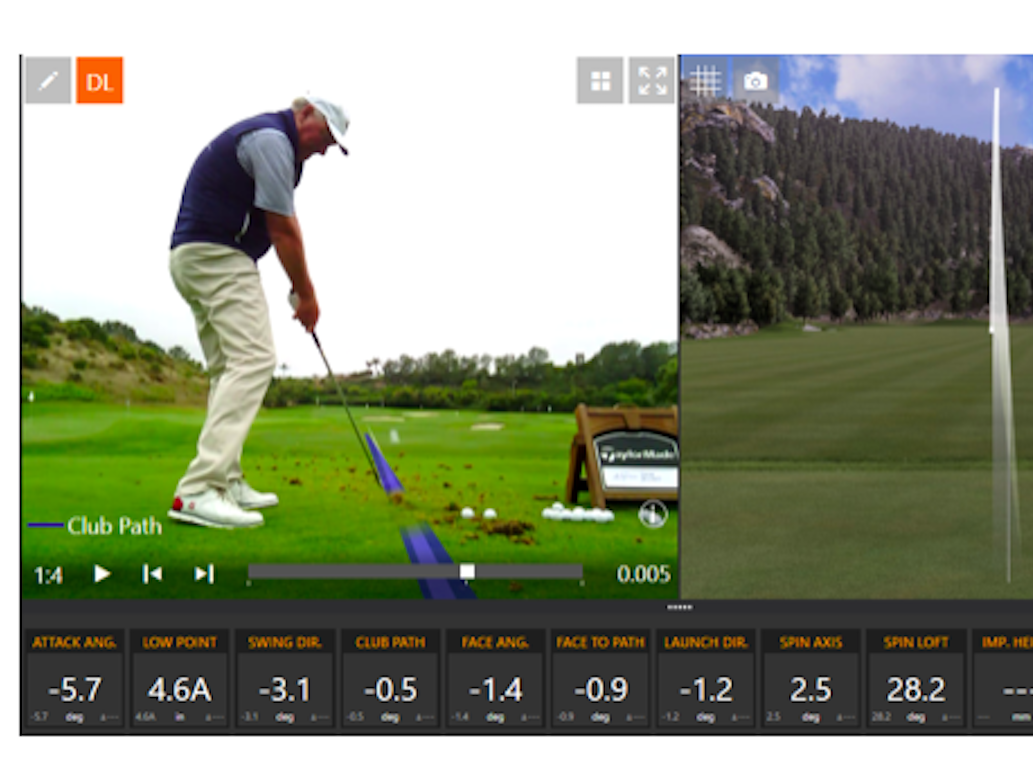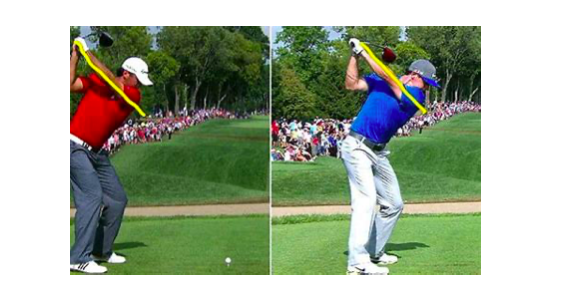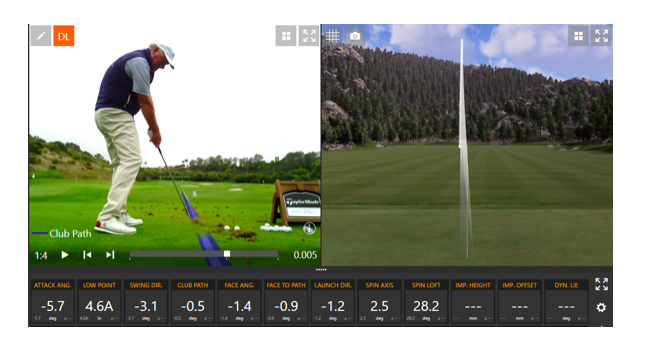Instruction
Tom Stickney (and Phil Blackmar): Don’t forget how to “play” golf!

One of the greatest things about golf today is that with the internet you have an opportunity to research, read, and get to know what different players and teachers believe unlike years ago. When I started teaching back in the early 90s golf instruction was a closed shop and everyone was very proprietary with what they knew and understood. Now everything is out in the open because of the internet and it’s a much better system for upcoming teachers and players.
One of my favorite things to do is to go back and read what the Tour Players did long before the days of “gurus” because I love to hear HOW they did it and played the game to such a high level with such little information- unlike today. As I scoured the internet I found the blog of Phil Blackmar, whom you know from The Golf Channel and as a long-time Tour Member. Phil was a grinder with a “self-made” golf swing who won a few events on Tour to the outsiders, but to his peers he was a thinker and a cerebral player who always got the most out of his game.
For me, the more I read what Phil wrote in his various blogs the more I understood that he was indeed a genius in the ways of understanding HOW to play, think, and make it happen on the course in order to shoot the lowest score possible…and that is the reason why he was on Tour for over 20 years!
So, I welcome you to read the next few articles in my series with Phil and I hope you enjoy his information as much as I do…
Thoughts from Phil Blackmar
The game has always been about how to score and it continues to be that way today. However, over the past 30 years we have seen the prescription for how to score change considerably. getting it around the course as best as possible. The swing has always been important and …when the swing was “there” it was easier to control your ball’s flight. However, players seemed more prepared to use manufactured shots when the swing was off to move the ball from point A to point B, find a way to swing with certainty and to “manage” misses.
During this time, you saw swings of all types but these unique moves were the player’s way of avoiding a certain miss. Remember Ben Hogan said “golf is not a game of good shots, it’s a game of bad shots.” It was less about being perfect and more about understanding your game to the point where you could control the ball regardless of what swing showed up on that day. Couples said he would get to the course and see which way the ball was moving and that was the shot he played that day no stress, no worries, it’s all about ebbs and flows. Jack Nicklaus echoed this point when he said “his swing felt really good about half the time but was manageable 95% of the time.”
The advent of video began our first foray into trying to be perfect or look a certain way. The “swing model”, a collection of positions based on averages of very good players, came into vogue. The premise was if it didn’t look like the “perfect” Tour Pro model, then it would likely fail under pressure- right?

Next came the advent of Trackman and other launch monitors coupled with video. Now we could look deeper into impact and leave no stone unturned. These machines have provided us with a wealth of information such as how to better understand ball-flight outputs so we can make our practice sessions more efficient. If we could only better manage impact then we could not help but play better- right?

Now the game has shifted toward playing “golf swing” where technique and science is the solution to all problems golf-related. A great example of this has to do with curve. Curve was a tool used for both the physical and mental sides of the game where the shot created the swing. Now, often players are consumed with path, face, spin axis, etc., all is a quest to hit the ball straight and avoid curve. The swing creates the shot.
Today’s prescription is to hit balls using your launch monitor trying to repeat the “perfect” swing over and over. Then you try and take this to the golf course and see what happens. If you make good swings then you have a chance to win, but if you make bad swings then you fail- and it’s back to the practice tee to go to work on what broke down in your robotic quest to hit shots- NOT play golf. What happened to the guys like Trevino, who said if swing A was not working then I’ll use swing B, and if too isn’t working, then I’ll use swing C…I know one of them will show up to play golf that day! He was less concerned with hitting perfect shots or making perfect swings and more focused on controlling the ball or avoiding trouble as best as he could on that given day!
Golf instruction used to be dominated by players whose primary concern was teaching students how to score using feels, shapes and imagination. Science entered the picture and changed the game’s landscape. Not only that, it dominates golf instruction today. Science vs feel and creativity is a contentious topic where people tend to want one or the other but not a combination of the two. However, unquestionably a player’s best game rests on a pendulum that balances science with the human side. There is no one answer or method that helps everyone because no two swings are exactly alike. No one person can feel for another just like timing and feels often change like the wind. The best answer is the one that fits the player like a glove and takes from both science and the intangible game of feels. It’s time we move forward by taking the best from yesterday and marrying the best from today.
After all, who do you want for your partner on the first tee: the player who looks good or the player who feels good?
- LIKE52
- LEGIT2
- WOW1
- LOL0
- IDHT0
- FLOP1
- OB0
- SHANK3
Instruction
Clement: Laid-off or perfect fade? Across-the-line or perfect draw?

Some call the image on the left laid off, but if you are hitting a fade, this could be a perfect backswing for it! Same for across the line for a draw! Stop racking your brain with perceived mistakes and simply match backswing to shot shape!
- LIKE0
- LEGIT0
- WOW0
- LOL0
- IDHT0
- FLOP0
- OB0
- SHANK1
Instruction
The Wedge Guy: The easiest-to-learn golf basic

My golf learning began with this simple fact – if you don’t have a fundamentally sound hold on the golf club, it is practically impossible for your body to execute a fundamentally sound golf swing. I’m still a big believer that the golf swing is much easier to execute if you begin with the proper hold on the club.
As you might imagine, I come into contact with hundreds of golfers of all skill levels. And it is very rare to see a good player with a bad hold on the golf club. There are some exceptions, for sure, but they are very few and very far between, and they typically have beat so many balls with their poor grip that they’ve found a way to work around it.
The reality of biophysics is that the body moves only in certain ways – and the particulars of the way you hold the golf club can totally prevent a sound swing motion that allows the club to release properly through the impact zone. The wonderful thing is that anyone can learn how to put a fundamentally sound hold on the golf club, and you can practice it anywhere your hands are not otherwise engaged, like watching TV or just sitting and relaxing.
Whether you prefer an overlap, interlock or full-finger (not baseball!) grip on the club, the same fundamentals apply. Here are the major grip faults I see most often, in the order of the frequency:
Mis-aligned hands
By this I mean that the palms of the two hands are not parallel to each other. Too many golfers have a weak left hand and strong right, or vice versa. The easiest way to learn how to hold the club with your palms aligned properly is to grip a plain wooden ruler or yardstick. It forces the hands to align properly and shows you how that feels. If you grip and re-grip a yardstick several times, then grip a club, you’ll see that the learning curve is almost immediate.
The position of the grip in the upper/left hand
I also observe many golfers who have the butt of the grip too far into the heel pad of the upper hand (the left hand for right-handed players). It’s amazing how much easier it is to release the club through the ball if even 1/4-1/2″ of the butt is beyond the left heel pad. Try this yourself to see what I mean. Swing the club freely with just your left hand and notice the difference in its release from when you hold it at the end of the grip, versus gripping down even a half inch.
To help you really understand how this works, go to the range and hit shots with your five-iron gripped down a full inch to make the club the same length as your seven-iron. You will probably see an amazing shot shape difference, and likely not see as much distance loss as you would expect.
Too much lower (right) hand on the club
It seems like almost all golfers of 8-10 handicap or higher have the club too far into the palm of the lower hand, because that feels “good” if you are trying to control the path of the clubhead to the ball. But the golf swing is not an effort to hit at the ball – it is a swing of the club. The proper hold on the club has the grip underneath the pad at the base of the fingers. This will likely feel “weak” to you — like you cannot control the club like that. EXACTLY. You should not be trying to control the club with your lower/master hand.
Gripping too tightly
Nearly all golfers hold the club too tightly, which tenses up the forearms and prevents a proper release of the club through impact. In order for the club to move back and through properly, you must feel that the club is controlled by the last three fingers of the upper hand, and the middle two fingers of the lower hand. If you engage your thumbs and forefingers in “holding” the club, the result will almost always be a grip that is too tight. Try this for yourself. Hold the club in your upper hand only, and squeeze firmly with just the last three fingers, with the forefinger and thumb off the club entirely. You have good control, but your forearms are not tense. Then begin to squeeze down with your thumb and forefinger and observe the tensing of the entire forearm. This is the way we are made, so the key to preventing tenseness in the arms is to hold the club very lightly with the “pinchers” — the thumbs and forefingers.
So, those are what I believe are the four fundamentals of a good grip. Anyone can learn them in their home or office very quickly. There is no easier way to improve your ball striking consistency and add distance than giving more attention to the way you hold the golf club.
More from the Wedge Guy
- The Wedge Guy: Golf mastery begins with your wedge game
- The Wedge Guy: Why golf is 20 times harder than brain surgery
- The Wedge Guy: Musings on the golf ball rollback
- LIKE88
- LEGIT14
- WOW6
- LOL1
- IDHT0
- FLOP4
- OB1
- SHANK8
Instruction
Clement: Stop ripping off your swing with this drill!

Not the dreaded headcover under the armpit drill! As if your body is defective and can’t function by itself! Have you seen how incredible the human machine is with all the incredible feats of agility all kinds of athletes are accomplishing? You think your body is so defective (the good Lord is laughing his head off at you) that it needs a headcover tucked under the armpit so you can swing like T-Rex?
- LIKE0
- LEGIT3
- WOW2
- LOL0
- IDHT0
- FLOP0
- OB0
- SHANK2
-

 19th Hole2 weeks ago
19th Hole2 weeks agoJustin Thomas on the equipment choice of Scottie Scheffler that he thinks is ‘weird’
-

 19th Hole2 weeks ago
19th Hole2 weeks ago‘Absolutely crazy’ – Major champ lays into Patrick Cantlay over his decision on final hole of RBC Heritage
-

 19th Hole3 weeks ago
19th Hole3 weeks agoReport: LIV Golf identifies latest star name they hope to sign to breakaway tour
-

 19th Hole3 weeks ago
19th Hole3 weeks agoNeal Shipley presser ends in awkward fashion after reporter claims Tiger handed him note on 8th fairway
-

 19th Hole3 weeks ago
19th Hole3 weeks agoBrandel Chamblee has ‘no doubt’ who started the McIlroy/LIV rumor and why
-

 19th Hole1 week ago
19th Hole1 week agoLET pro gives detailed financial breakdown of first week on tour…and the net result may shock you
-

 Equipment3 weeks ago
Equipment3 weeks agoJason Day on his recent switch into Srixon ZX5 and ZX7 Mk II irons
-

 19th Hole5 days ago
19th Hole5 days agoGary Player claims this is what ‘completely ruined’ Tiger Woods’ career


















lee j kocanda
Jan 24, 2022 at 8:59 pm
great piece so true as i have experienced myself alwayshave been a solid player but wanted to get that perfect swing bad move i am 69 and remember years ago watching the tour boys and every swing was different now they all look the same give me miller barber jim thrope calvin peete trevino they all got the job done without a posse